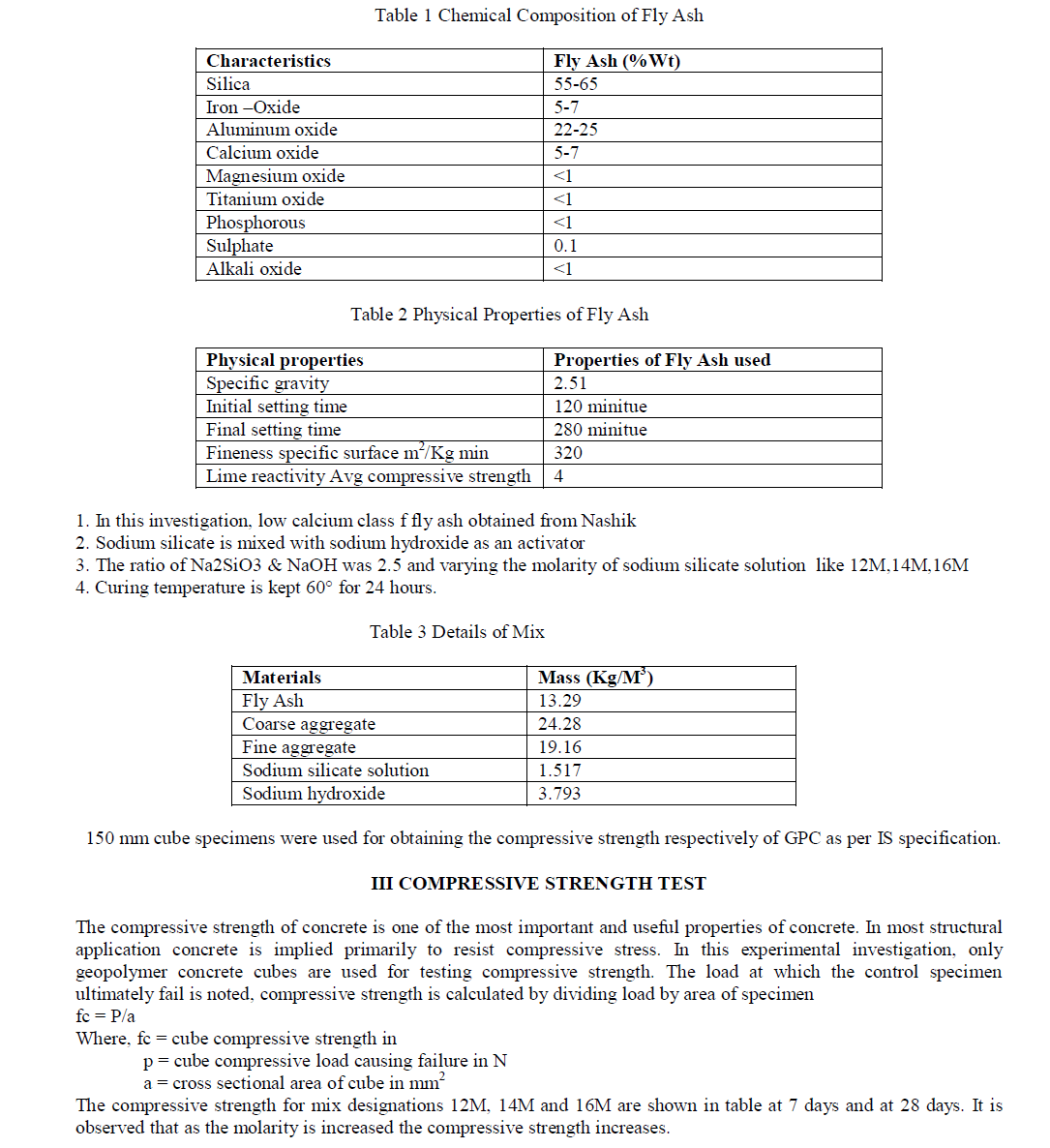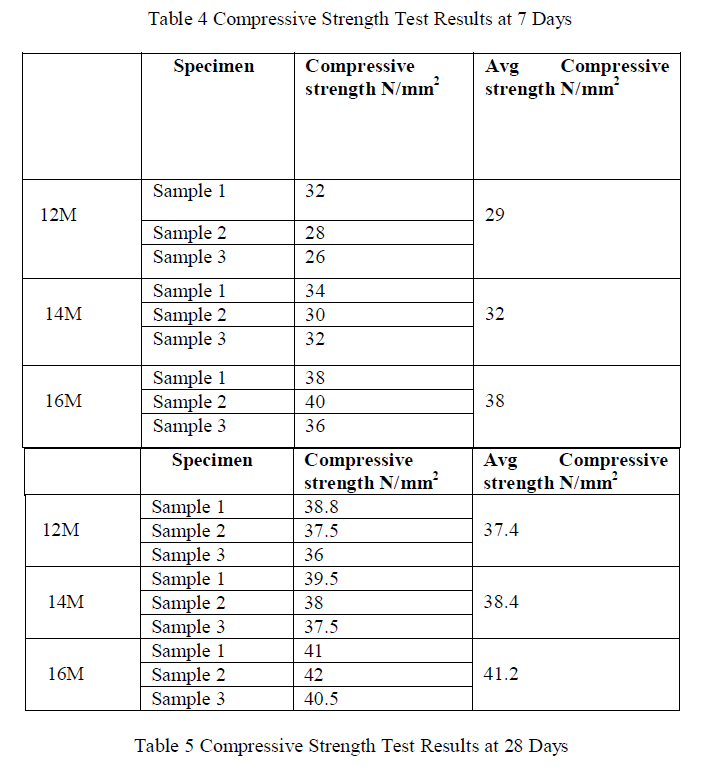ISSN ONLINE(2319-8753)PRINT(2347-6710)
ISSN ONLINE(2319-8753)PRINT(2347-6710)
U.R.Kawade1 , P.A.Salunkhe2 , S.D.Kurhade2
|
| Related article at Pubmed, Scholar Google |
Visit for more related articles at International Journal of Innovative Research in Science, Engineering and Technology
A concrete use around the world is second only to water. The production of ordinary Portland cement contributes 5-7% of total green house gas emission. It also consumes large amount energy .Hence it is essential to find alternative to cement. Fly ash is a byproduct of coal obtained from thermal power plant. It is also rich in silica and alumina. In this paper, fly ash is used to produce a geopolymer concrete. Geopolymer is a material resulting from the reaction of a source material that is rich in silica and alumina with alkaline solution. Geopolymer concrete is totally cement free concrete. In geopolymer, fly ash act as binder and alkaline solution act as an activator. Fly ash and alkaline activator undergo geopolymerization process to produce alumino silicate gel. Alkaline solution used for present study is combination of sodium hydroxide (NaOH) and sodium silicate (NaSio) with ratio 2.5. A grade chosen for the investigation were M40.The mix were designed for molarity of 12M, 14M and 16M. The test results have shown that compressive strength increases with increase in molarity.
Keywords |
| Geopolymer Concrete, Fly Ash, Strength, Curing, Alkaline solution. |
INTRODUCTION |
| Concrete is worldwide used construction material after water. Ordinary Portland cement is conventionally used as primary binder to produce concrete. Some inherent disadvantages of OPC are still difficult to overcome. Two major drawback of OPC sustainability are, the contribution of OPC production worldwide to the greenhouse gas emission is to be about 5-7% of the total greenhouse gas emission to the earth’s atmosphere. Cement is also among the most energy intensive construction material after steel and aluminum. Therefore it is necessary to find alternative binder to cement. Fly ash is a byproduct of coal obtained from thermal power plant. It is also rich in silica and alumina. the abundant availability of fly ash worldwide create opportunity to utilize this byproduct of burning coal, as substitute for OPC to manufacture concrete. In 1978, Davidovits proposed that binder could be produced by a polymeric reaction of alkaline liquids with the silicon and aluminum in source material of geological origin or byproduct material such as fly ash and rise husk ash. He termed these binders as geopolymers to present the mineral polymers resulting from geochemistry. geopolymers are members of the family of inorganic polymers having chemical composition similar to natural zeolitic materials, but the microstructure is amorphous. the polymerization process involves a substantially fast chemical reaction under alkaline condition on si-al mineral that result in a three-dimensional polymeric chain and ring structure consisting of Si-O-Al-O bonds (Davidovits, 1994) water is not involved in chemical reaction of geopolymer concrete and instead water is expelled during curing and subsequent drying which is in contrast to hydration reaction that occure when OPC is mixed with water. |
METHODOLOGY AND EXPERIMENTAL PROGRAME |
| a) Objective: |
| Objective of this investigation is to study performance characteristics of source material |
| 1) Study & evaluation of chemical composition & effects of NaOH & sodium silicate on fly ash. |
| 2) Study of polymerization process in Fly ash, NaOH & sodium silicate of the composition that is geopolymer. |
| 3) Testing of geopolymer by using universal testing machine. |
| 4) Analysis of geopolymer testing & comparison. |
| b) Material used: |
| Low calcium Class F fly ash, Sodium hydroxide,Sodium silicate solution ,Coarse aggregate, Fine aggregate, Distilled water |
 |
 |
CONCLUSION |
| 1. The construction industry is in demand of eco friendly & greener materials which are durable. As compared to the existing concrete materials, fly ash is advantageous but its uses as tested against strength & durability needs to be confirmed. The present project work emphasized on the research & development activity in construction materials using fly ash with geo polymers. |
| 2. The project work revels with preparation of test samples of fly ash with geo polymers of different molarity of sodium silicate solution .The samples are prepared with the different molarities such as 12M, 14M and 16M. |
| 3. Tests for compressive strength are carried out on samples as above for 7 & 28 days, as per prevailing standards for respective properties. The test results have shown that compressive strength increases with increase in molarity. |
ACKNOWLEDGMENT |
| The author, like to thank our project guide Prof.U.R.Kawade for their constant encouragement, help and support. All Management and Staff of Dr.PDVVP COE Ahmednagar for providing facilities for conducting the experimental investigation in institute. |
References |
|